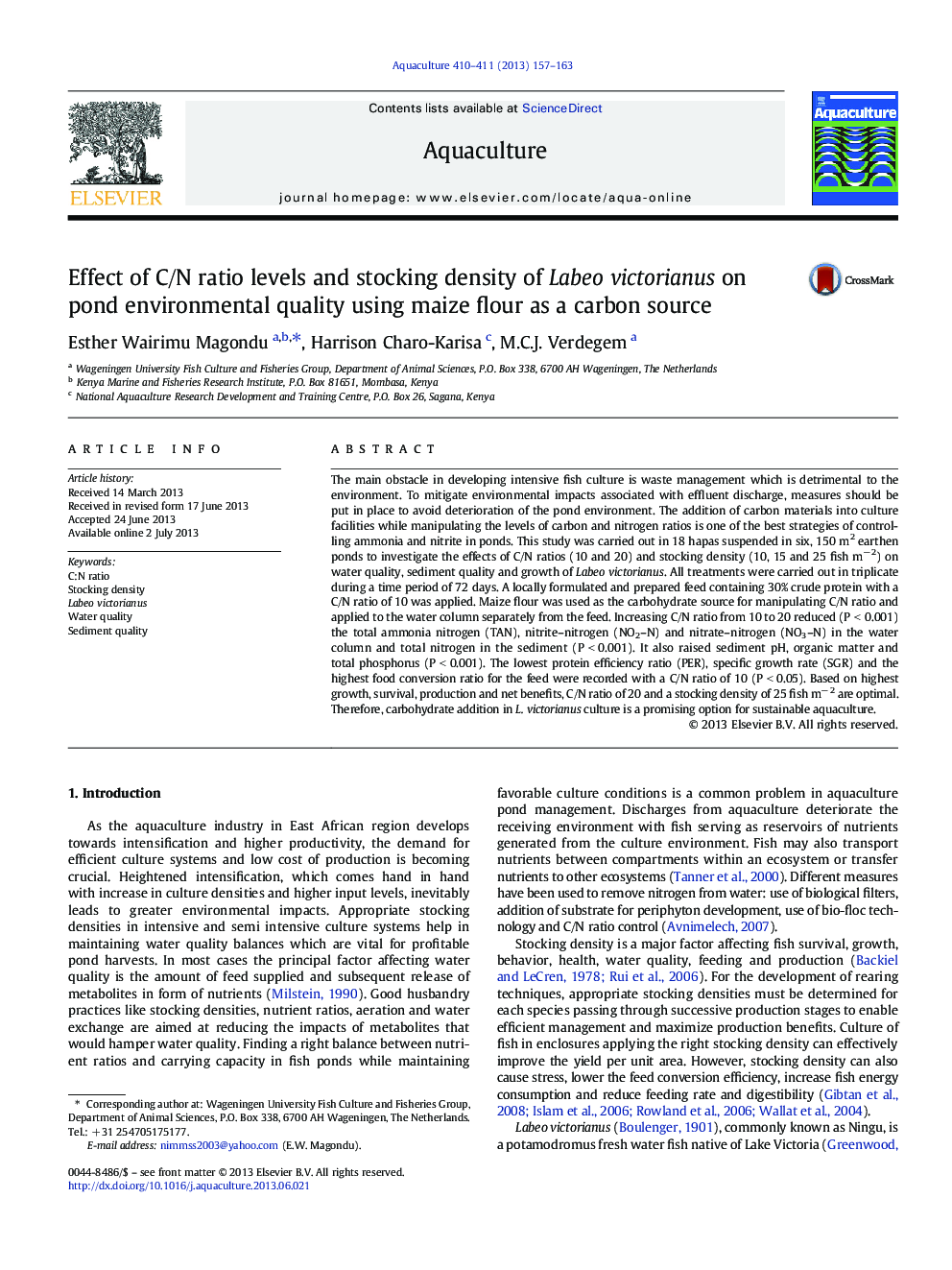| Article ID | Journal | Published Year | Pages | File Type |
|---|---|---|---|---|
| 2422086 | Aquaculture | 2013 | 7 Pages |
•The stocking density of L. victorianus influenced water quality parameters.•C/N ratio control by carbohydrate addition improved water and sediment quality.•We report high net and gross yield of L. victorianus in high C/N ratio treatments.•C/N ratio of 20 and a stocking density of 25 fish m− 2 are optimal.•Research with much higher densities in combination with column grazers is proposed.
The main obstacle in developing intensive fish culture is waste management which is detrimental to the environment. To mitigate environmental impacts associated with effluent discharge, measures should be put in place to avoid deterioration of the pond environment. The addition of carbon materials into culture facilities while manipulating the levels of carbon and nitrogen ratios is one of the best strategies of controlling ammonia and nitrite in ponds. This study was carried out in 18 hapas suspended in six, 150 m2 earthen ponds to investigate the effects of C/N ratios (10 and 20) and stocking density (10, 15 and 25 fish m− 2) on water quality, sediment quality and growth of Labeo victorianus. All treatments were carried out in triplicate during a time period of 72 days. A locally formulated and prepared feed containing 30% crude protein with a C/N ratio of 10 was applied. Maize flour was used as the carbohydrate source for manipulating C/N ratio and applied to the water column separately from the feed. Increasing C/N ratio from 10 to 20 reduced (P < 0.001) the total ammonia nitrogen (TAN), nitrite–nitrogen (NO2–N) and nitrate–nitrogen (NO3–N) in the water column and total nitrogen in the sediment (P < 0.001). It also raised sediment pH, organic matter and total phosphorus (P < 0.001). The lowest protein efficiency ratio (PER), specific growth rate (SGR) and the highest food conversion ratio for the feed were recorded with a C/N ratio of 10 (P < 0.05). Based on highest growth, survival, production and net benefits, C/N ratio of 20 and a stocking density of 25 fish m− 2 are optimal. Therefore, carbohydrate addition in L. victorianus culture is a promising option for sustainable aquaculture.
